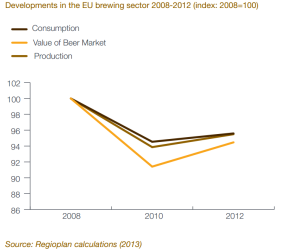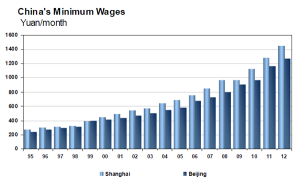Alcohol has never been seen as essential as the bread and milk for people’s life. But for a long time, alcohol consumption has played an important part in some country’s economy, and in some ways, helped indicate the economic growth, employment issue, and even social problems.

Alcohol has never been seen as essential as the bread and milk for people’s life. But for a long time, alcohol consumption has played an important part in some country’s economy, and in some ways, helped indicate the economic growth, employment issue, and even social problems.
Anton Reed, from Washington and Lee University, used Figure-1 demonstrating a strong correlation (79.5%) between household alcohol consumption and GDP. When GDP decreased and fluctuated afterward, in response, alcohol expenditure also decreases.

Figure-1
1st graph: %change in Income and %change in Alcohol Expenditures
2nd graph: Japan’s Alcohol Expenditure and Average Annual Household Income
And the statistic implies more, when it touches on the drinkers, the consumers. Figure-2 reveals a correspondent increase/decrease between alcohol consumption and income. And the statistical correlation is as high as 96.34%.

Figure-2
1st graph: %change in Income and %change in Alcohol Expenditures
2nd graph: Japan’s Alcohol expenditure and Average Annual Household Income
Similar results showed up in the study commissioned by the European Brewing Sector regarding beer consumption in European countries. An article named It’s a Beer Recession by Jack Ewing illustrated how unemployment rate and the European debt crisis influenced people’s drinking habit. Figure-3 shows that the EU brewing sector suffered from a severe economic downturn from 2008 to 2010, when Europe’s economy fell down under the strike from the U.S. Great Recession. People became pessimistic of European economy, and both government revenues as well as employment in brewing sector fell dramatically.
Along with that, in Figure-4, beer consumption decreased by nearly 9%, and the value of beer market and production also responded in the same way.
Ewing pointed out that “…the employment in the beer industry fell by 12 percent, or 260,000 jobs, the study said…Job losses can exacerbate the debt crisis because unemployed people typically collect benefits rather than pay taxes. When beer consumption declines, governments also collect less sales tax on beer sales.”
On top of Japan and European countries, China, considering its successful and tremendous alcohol market, also showed a trace of the relationship between alcohol consumption and economic growth. According to Consumer Trends: Wine, Beer and Spirits in China released by Manitoba government, off-trade* sales make up 80% of spirit sales in China, and the total expenditure increased by 7%. At the same time, the volume of on-trade spirits decreased from 2008 to 2009, because of reduced expenditure on entertainment during hard economic times.
Also, Felix Salmon from Reuters showed Figure-5 demonstrating a boost of beer consumption in China, as the broken line tilts up after 1977. Comparing beer consumption after 1995 with Figure-6, the statistic reveals a corespondent increase in both values. Salmon explained that, “what we’re seeing here is largely the China effect — and, more generally, a world where poor people, once they reach a certain minimum income, start hitting the hops.”
Thus, from the above cases, we may see that once the country is in recession, the unemployment rate goes up, then people’s drinking money shrinks, then the alcohol consumption decreases. So if people want to know how a country’s economy looks like, they may take a look at its alcohol market, unless it doesn’t have a strong culture of drinking.
For an endnote, what’s interesting but opposite to the alcohol index is that, in the U.S., alcohol consumption goes up even when the economy goes down. Michael French from University of Miami found that binge drinking increased with a rise in the state-level unemployment rate. Driving while intoxicated and alcohol abuse and dependence also increased for both genders and across ethnic groups. This has been said that alcohol index is not enough for us to peep into one country’s economy.
*On-trade = alcoholic beverages sold in restaurants, bars etc.
Off-trade = alcoholic beverages sold in retail stores




Leave a Reply
You must be logged in to post a comment.